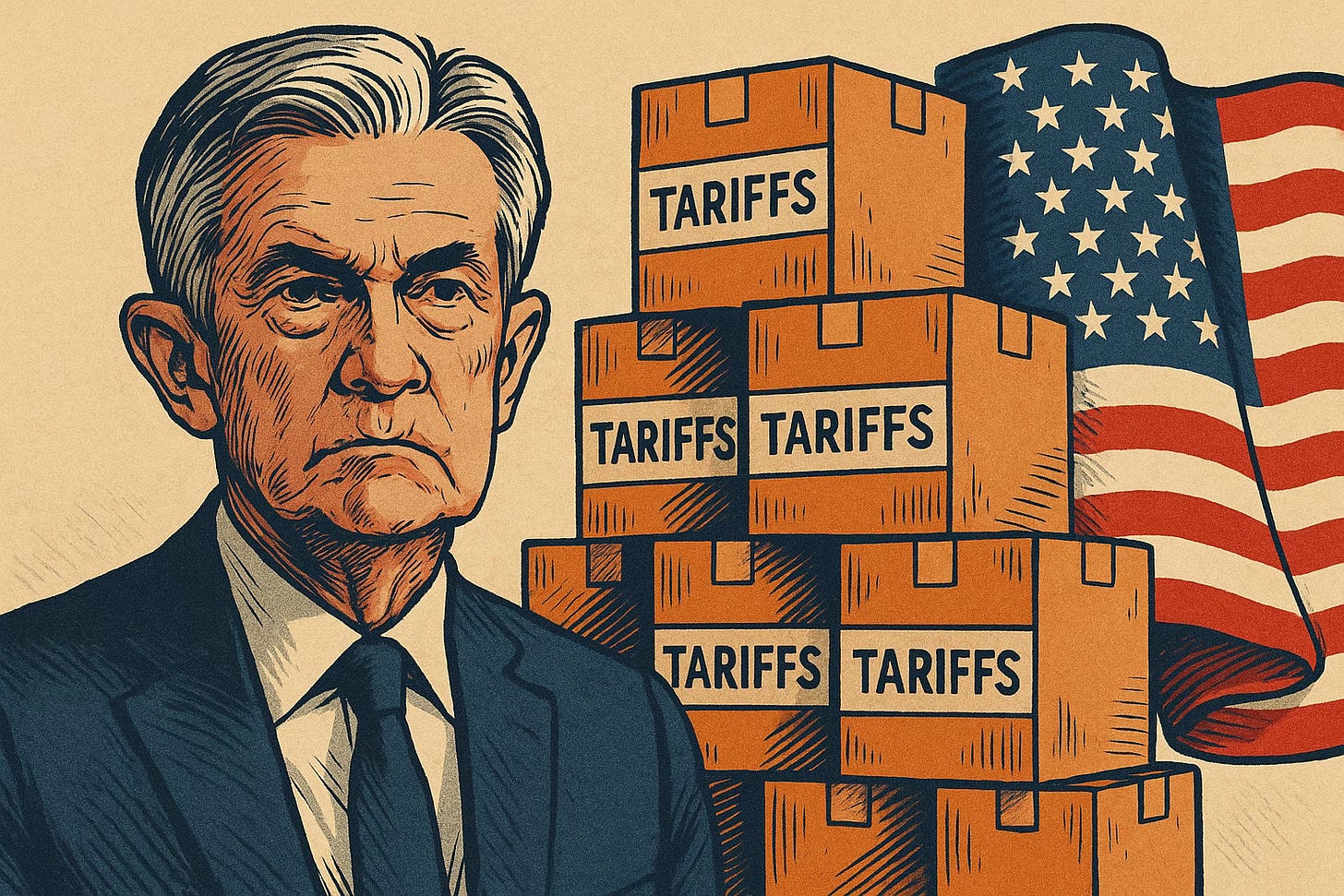The Federal Reserve isn’t guiding the economy anymore. It’s reacting to it. Behind closed doors and carefully worded statements, monetary policy has become little more than a spectator sport.
While the market clings to every comma from Powell, real policy risk now comes from elsewhere: tariffs, deficits, and the increasingly improvisational tone of Washington’s fiscal theater. What the Fed calls caution, the rest of the world is starting to call paralysis.
At its May 6–7 meeting, the Fed held rates between 4.25% and 4.50%. That’s not policy. It's a placeholder.
The minutes, released today (May 28), were drenched in the usual non-committal language. Difficult tradeoffs. Increased uncertainty. Well positioned to wait. Translated from central bank dialect: there is no clear direction.
The core threat isn't buried in the data. It’s structural. Inflation is being re-engineered through policy, not markets. Tariffs are pushing costs higher in real time. Supply chains aren’t adjusting; they’re mutating.
Companies are absorbing, re-routing, or panic stockpiling. This is inflation with fingerprints.
GDP fell 0.3% in Q1 2025. Headlines labeled it a contraction. In reality, it was a tariff-induced distortion. Imports spiked 41% as businesses scrambled to secure goods ahead of expected duties.
Final sales to private domestic purchasers rose 3.0%, suggesting the demand base is still there. The problem is what happens when these buffers vanish.
Labor markets tell a similar story. Unemployment remains at 4.2%, but momentum is slipping. Job gains are clustered. Participation is flat.
It’s not collapse, but it’s not resilience either. Employers aren't hiring into uncertainty. They're holding their breath.
Consumer spending keeps the illusion alive. Retail sales up 5.2% in April, boosted by auto, food, and hospitality. But this momentum rests on conditions that are already eroding.
Tariff passthrough is coming. Wage growth isn’t catching up. Disposable income won’t stretch forever.
The Fed’s FAIT framework has quietly been shelved.
Originally meant to allow inflation to overshoot following periods of undershooting, it now stands empty. Powell recently dismissed its relevance. The Committee reverted to traditional inflation targeting without saying it aloud.
A temporary trade pause with China earlier this month gave markets a sugar high. Duties were reduced. Negotiations opened.
But most tariffs remain in place, and the clock is ticking. Structural uncertainty dominates the background.
Firms are adapting not out of strategy, but survival. Rewiring suppliers. Holding excess stock. Paying for flexibility.
One distributor described it plainly: eating the costs now to peel market share before the cliff. The playbook is gone. What's left is instinct.
The bond market no longer takes cues from the Fed.
The curve steepened. Long-end yields climbed. Investors are demanding compensation for holding duration in a deficit-driven economy.
Trump’s “Big Beautiful Bill” signals higher issuance, more debt, and relentless supply. Bond traders know this isn’t tightening. It’s drowning in fiscal noise.
Equities pulse to the rhythm of political headlines. Selloffs on EU tariff threats. Relief rallies on short-term truces.
Mega caps flinch. Yields swing. It’s not price discovery anymore. It’s theater.
The Fed isn’t being cautious. It’s constrained. Inflation hasn’t returned to target. Growth looks patchy. Trade policy pours gasoline on both.
Cutting rates feeds the fire. Standing still invites stagnation. Hiking is politically toxic. The Fed's posture now amounts to stalling, hoping the storm passes without structural damage.
If tariffs become a permanent feature and fiscal expansion accelerates, inflation ceases to be episodic. It becomes embedded.
The Fed's toolkit won't bend around that outcome. It will snap.
The era of monetary primacy is ending.
Trade, debt, and political brinkmanship now write the macro script. Investors looking to the Fed for clarity are staring into a rearview mirror.
The chaos isn’t pending. It’s active.


